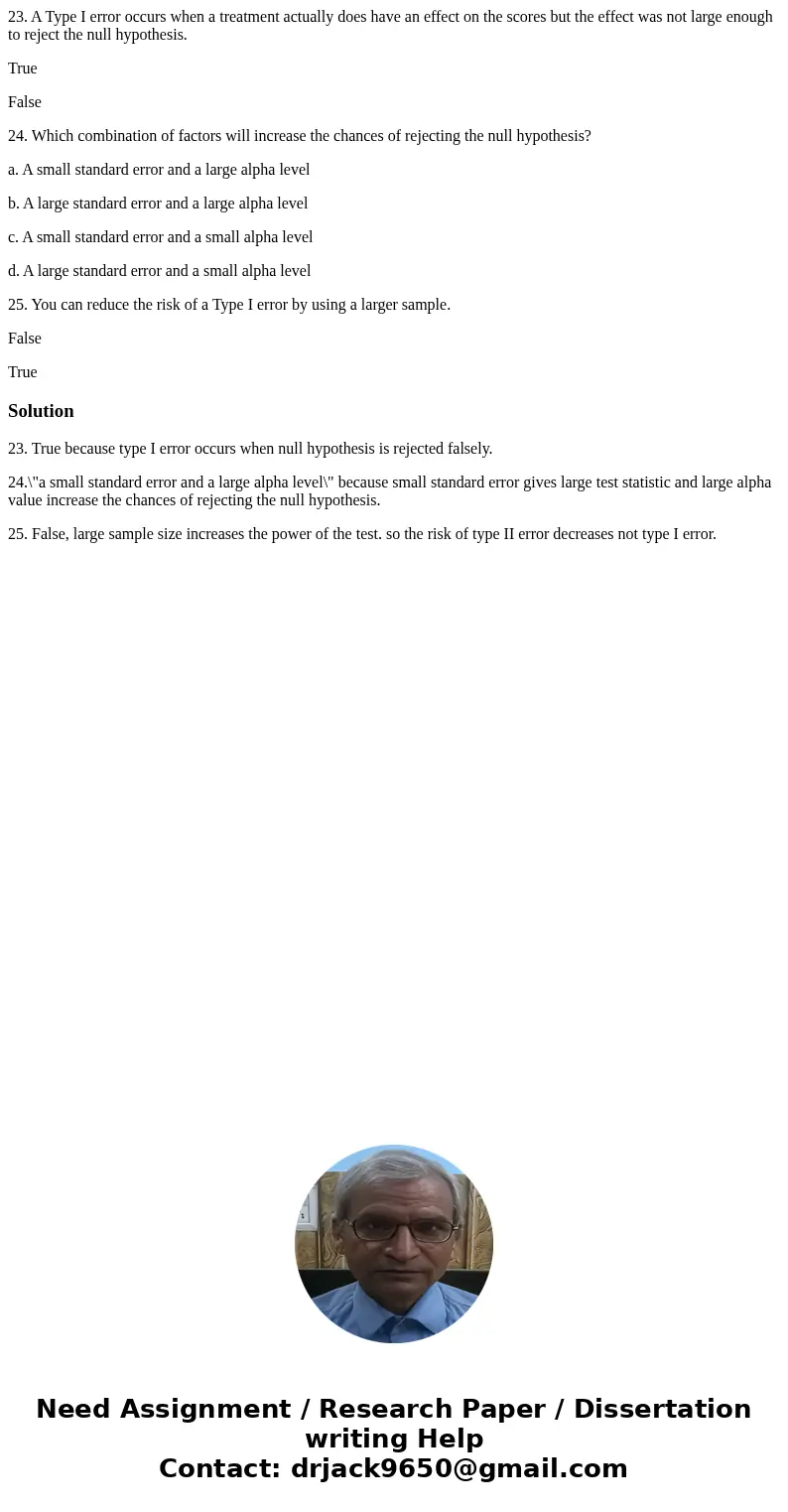23 A Type I error occurs when a treatment actually does have
23. A Type I error occurs when a treatment actually does have an effect on the scores but the effect was not large enough to reject the null hypothesis.
True
False
24. Which combination of factors will increase the chances of rejecting the null hypothesis?
a. A small standard error and a large alpha level
b. A large standard error and a large alpha level
c. A small standard error and a small alpha level
d. A large standard error and a small alpha level
25. You can reduce the risk of a Type I error by using a larger sample.
False
True
Solution
23. True because type I error occurs when null hypothesis is rejected falsely.
24.\"a small standard error and a large alpha level\" because small standard error gives large test statistic and large alpha value increase the chances of rejecting the null hypothesis.
25. False, large sample size increases the power of the test. so the risk of type II error decreases not type I error.

 Homework Sourse
Homework Sourse